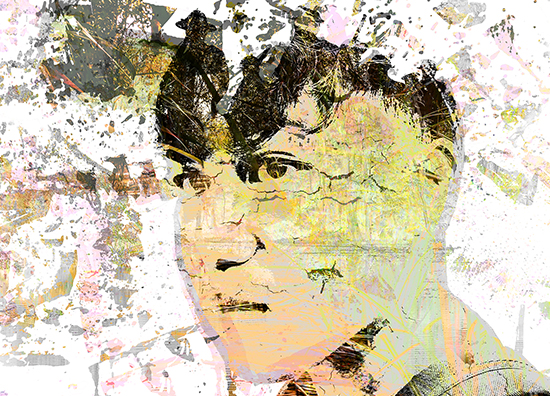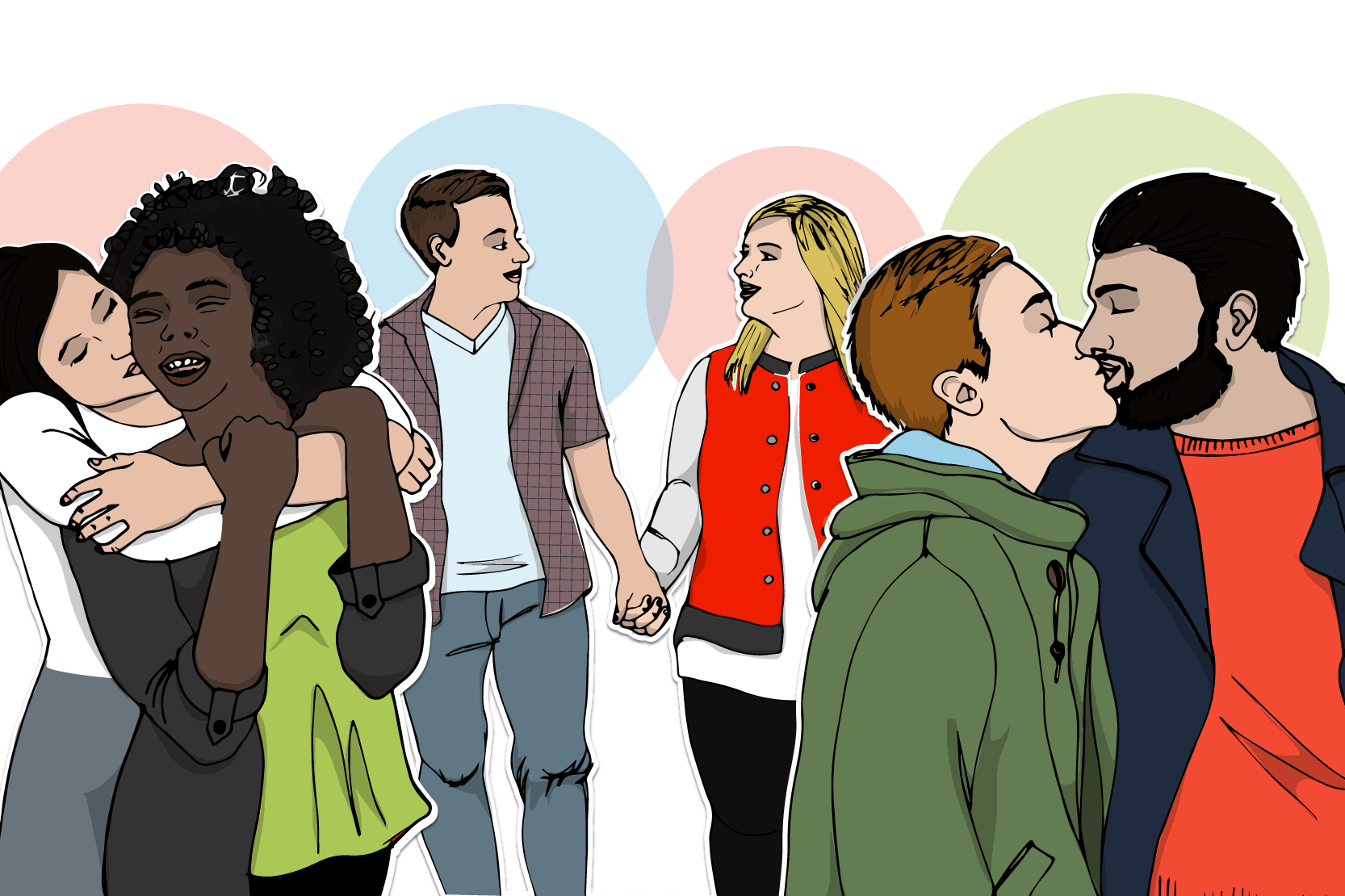Identity is fundamental to our existence. It helps us belong to a certain group or to stand out from the structured binaries. What we choose to express to the world becomes our identity, simply put. We can choose our identities or create some for ourselves. I’d like to think of identity as ever-changing. Because as we keep living through new experiences, our identities change. It’s like a river that’s flowing, collecting whatever it can, and leaving whatever it feels necessary. What I love about identity is the agency it comes with, for the most part. It’s essential to remember that as we grow in life, it’s really up to us to choose our identities and/or to stick to the ones we have been assigned at our birth.
Identity comes at two levels: your social identity and your personal identity. The social identity comes with a sense of community and a sense of belongingness. This could be your national identity, your racial identity or your class identity. And your personal identity consists of your personal experiences and thoughts which make you who you are. It is your gender identity, your sexual orientation or your religious identity. These are your personal identities that come from you and your life. If you have chosen to identify yourself in a certain way, you can be part of groups who choose to identify the way you do. And then that can become a collective identity.

PERSONAL IDENTITY
Your personal identity consists of experiences, thoughts and expressions you want to stick to and choose to make it part of your self-expression. This includes your gender and your sexual orientation among many others.
Gender Identity:
The idea of expressing oneself through gender is called gender identity. Gender is a spectrum and is not restricted by the anatomical features of an individual. At this spectrum’s ends stand the standard binary: masculinity and femininity. However, many individuals do not fall into either category, and choose to identify themselves on how they feel. There are many genders, however, an official number is not known but we estimate the number to be 64.
Non-binary is an umbrella term for individuals who are not confined to either masculinity or femininity. This includes agenders, non-binary folks and transpeople, genderqueers or genderfluid persons. Roughly:

- There could be people who do not want to identify themselves with a gender. These individuals are known as agender individuals. (Agender literally means without gender.)
- Non-binary folks are those individuals who do not identify as male or female. They don’t identify a hundred percent as one gender.
- Trans: Individuals whose gender identity differs from the one assigned at birth.
- Gender-fluid: An individual whose gender identity changes and varies from time to time.
Note: We strongly advice everyone to ask people’s pronouns so as to be gender-sensitive and inclusive. If you’re confused about someone’s gender, simply refer to them as they/them to be more inclusive. If you’re an ally, be sure to put your pronouns in your bios or introduce yourself with your preferred pronouns. This shows solidarity and makes genderqueer individuals comfortable.
Sexual Orientation:
Sexual Orientation is the pattern of an individual’s romantic or sexual attractions. This also lies on a spectrum and is not confined to the structurally accepted heterosexuality. It’s commonly accepted for two opposite genders to be attracted to each other. However, that’s not always the case. If two individuals of the same-sex are attracted to each other, then that’s called homosexuality. If an individual is attracted to both the genders, then it’s called bisexuality. And if there’s a lack of sexual attraction, then it’s called asexuality. This is a rough overview of sexual orientation, simplified for the sake of the article. However, it is a much more complex topic.

SOCIAL IDENTITY
Social identity or collective identity is one’s expression of themselves in relation to others. This idea came from two social psychologists Tajfel and Turner to explain inter-group behavior, first in the 1980s.
Tajfel (1979) proposed that the groups (e.g. social class, family, football team etc.) which people belonged to were an important source of pride and self-esteem. Groups give us a sense of social identity: a sense of belonging to the social world.
Your social identities include any group you’re a part of. This can be: your national identity (which country you’re from) or your racial/ethnic idenitity (your identity based on your ethnicity or race.) This means group of people sharing a common and distinctive racial, national, religious, linguistic, or cultural heritage. Your social identity even includes the social class you belong to in a hierarchical structure of the society, like upper, middle or working class.
Sometimes, identities can become roles as well.
For example, the word mother, indicates the role of an individual and becomes their whole identity at one point of time. One’s professional occupation can also be indicative of their identities. For example, the word manager indicates their role in an organization and become a part of thier identity forever (in which case it means that the qualities that they have in their occupation bleeds into their personal life/identity as well.)
IDENTITY ERASURE
Identity erasure means erasing some parts of a person’s identity for them to be better fitted in the structure of the society. It sounds pretty simple, but is in fact, a lot more complicated than that. Because we identify as many different aspects, it’s easier for people who are not living in the margins to erase a part of our identity for their benefit. Identity erasure can come in many different forms. Identity erasure comes in social and personal ways.
It can come in the form of colonialism, for example, when the British took over India and erased many parts of our culture and society. This becomes a cultural erasure, where colonizers slowly but surely remove traditions and customs from a society and change it to their liking. Cultural Erasure took place when Hitler wanted to remove/kill all Jews and remove all signs of their societal norms, in an attempt to erase them fully from the world.
Another example of it is closer to home than we would like to believe. Dalit Erasure from the fabric of our society is real. And it keeps happening in small ways as well.
Personal Identity erasure takes place when people erase someone’s sexuality so as to not stand out in a crowd. Erasure can take place when privileged people conveniently say, “I don’t see color.” Or when society asks you to hide certain parts of yourself to be more socially accepted.
Why do people want to erase someone’s identity?
At first, the question seems peculiar in the twenty-first century. We’re a more progressive society and more open-minded, so why would anyone hide parts of their identity? Or, does it exist? And if it exists, then shouldn’t we accept people for who they are?

These are all valid questions but the answers to it are not. As in any case with social science, we have to look at things from a multifaceted perspective. Erasure takes place when people/society thinks of anything other than the norm as dangerous. Sort of like an unknown territory. And it increases fear or enrages people. This sort of thinking comes from the fact that we still live in a divided society and forms the us versus them thought. Globally, anything other than a cis-het white narrative causes people to raise their eyebrows. In India, any narrative apart from the majoritarian Brahminical view is not considered. Minorities in the society have to keep making sure that their history is not erased. Many times, these same minorities are portrayed as the enemy. As is seen in the cases of Dalits, Muslims, Blacks, etc.
Identity erasure takes place to dominate a group over the other. It can be done in ways that are gone unnoticed. Because our identities are multilayered, it’s convenient for people to erase one part of our identity if it fits their narrative.
To help you understand, let’s take the example of a well-known singer: Freddie Mercury. He was a bisexual man of color. But do you notice how easily this is ignored? In fact, in his own biopic, Bohemian Rhapsody, he ws referred to as gay, not bisexual. When Rami Malek accepted the Best Actor award for this role, he mentioned in his speech how they made a film about a gay man. That’s bisexuality erasure. (Because being gay is somehow better than being attracted to both genders. It shows ‘decisiveness’.)
Another example of erasure can be seen in Rumi’s translated poetry. In his translated poetry (by white writers like Coleman Banks), there’s no mention of Islam. Rumi was a Sufi saint whose poetry is now seen as the epitome of love. But many forget/don’t know that this poetry was deeply rooted in religion and he mainly wrote about his love for God, and equating this to the love of two individuals is erasing a major part of his history, legacy and Muslim culture.
This identity erasure often leads to culture appropriation. It means that dominant groups inappropriately adopt customs and cultures from minorities. Remember how Gucci tried to sell Pagdi (turbans) for 700 dollars two years ago? That’s culture appropriation. When dominant groups profit off of one’s culture or use it as ‘props’ for Halloween, it’s culture appropriation.
Does it affect mental health?
Identities are/become political, as we discussed in previous articles. This means that mental health becomes political. So the answer is yes, identity and identity erasure can cause a rise in mental illness. Womxn are almost 4x likely to get depression. The rates of depression, anxiety and suicide are higher in the LGBTQ community. Dalits also show more health related issues than upper-caste individuals.
Identity is fundamental to our existence and hurting or erasing any part of our identity will affect our mental well-being. And like we have said this before, we need to make systemic changes by including minority identities and making room for them. We have to shift our gears from the eurocentric view to a much more diverse and socially accommodating view. Therapy spaces must hold a stance of identifying privilege and oppression and give language to peoples suffering through the lens of these inequalities they experience in order to work towards preferred ways of being.
And until we remove these barriers from society, we will collectively keep seeing a rise in mental health illnesses. Identity matters, in every way. And it is more essential to our mental health than it is known.
—
Omaiha Walajahi
Writer
Pause for Perspective
